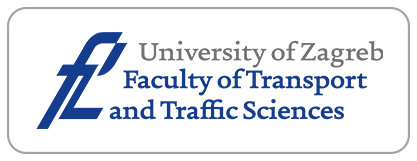Analysis of Factors Influencing the Vehicle Damage Level in Fatal Truck-Related Accidents and Differences in Rural and Urban Areas

Downloads
Downloads
U.S.A. Large trucks: 2013 data. (Traffic Safety Facts. DOT HS 812 150). Washington, DC: National Highway Traffic Safety Administration; 2014.
Theofilatos A, Graham D, Yannis G. Factors affecting accident severity inside and outside urban areas in Greece. Traffic Injury Prevention. 2012;13(5):458-467.
Khorashadi A, Niemeier D, Shankar V, Mannering F. Differences in rural and urban driver-injury severities in accidents involving large-trucks: an exploratory analysis. Accident Analysis & Prevention. 2005;37(5):910-921.
Lemp JD, Kockelman KM, Unnikrishnan A. Analysis of large truck crash severity using heteroskedastic ordered probit models. Accident Analysis & Prevention. 2011;43(1):370-380.
Yasmin S, Eluru N. Evaluating alternate discrete outcome frameworks for modeling crash injury severity. Accident Analysis & Prevention. 2013;59:506-521.
Chiou YC, Hwang CC, Chang CC, Fu C. Modeling two-vehicle crash severity by a bivariate generalized ordered probit approach. Accident Analysis & Prevention. 2013;51:175-184.
Jiang X, Huang B, Zaretzki RL, Richards S. Investigating the influence of curbs on single-vehicle crash injury severity utilizing zero-inflated ordered probit models. Accident Analysis & Prevention. 2013;57:55-66.
Yamamoto T, Hashiji J, Shankar VN. Underreporting in traffic accident data, bias in parameters and the structure of injury severity models. Accident Analysis & Prevention. 2008;40(4):1320-1329.
Wang Z, Chen H, Lu J. Exploring impacts of factors contributing to injury severity at freeway diverge areas. Transportation Research Record: Journal of the Transportation Research Board. 2009;(2102):43-52.
Quddus MA, Wang C, Ison, SG. Road traffic congestion and crash severity: econometric analysis using ordered response models. Journal of Transportation Engineering. 2009;136(5):424-435.
Ye F, Lord D. Investigation of effects of underreporting crash data on three commonly used traffic crash severity models: Multinomial logit, ordered probit, and mixed logit. Transportation Research Record: Journal of the Transportation Research Board. 2011;(2241):51-58.
Chen H, Cao L, Logan DB. Analysis of risk factors affecting the severity of intersection crashes by logistic regression. Traffic Injury Prevention. 2012;13(3):300-307.
Chu HC. Assessing factors causing severe injuries in crashes of high-deck buses in long-distance driving on freeways. Accident Analysis & Prevention. 2014;62:130-136.
Scott Long J. Regression models for categorical and limited dependent variables. Advanced quantitative techniques in the social sciences; 1997.
Williams R. Generalized ordered logit/partial proportional odds models for ordinal dependent variables. Stata Journal. 2006;6(1):58-82.
Wang X, Abdel-Aty M. Analysis of left-turn crash injury severity by conflicting pattern using partial proportional odds models. Accident Analysis & Prevention. 2008;40(5):1674-1682.
Chen C, Zhang G, Tarefder R, Ma JM, Wei H, Guan HZ. A multinomial logit model-Bayesian network hybrid approach for driver injury severity analyses in rear-end crashes. Accident Analysis & Prevention. 2015;80:76-88.
Sasidharan L, Menéndez M. Partial proportional odds model—An alternate choice for analyzing pedestrian crash injury severities. Accident Analysis & Prevention. 2014;72:330-340.
Bham GH, Javvadi BS, Manepalli URR. Multinomial logistic regression model for single-vehicle and multivehicle collisions on urban us highways in Arkansas. Journal of Transportation Engineering. 2011;138(6):786-797.
Kim JK, Ulfarsson F, Kim S, Shankar, VN. Driver-injury severity in single-vehicle crashes in California: a mixed logit analysis of heterogeneity due to age and gender. Accident Analysis & Prevention. 2013;50:1073-1081.
Zhang G, Wang Z, Persad KR, Walton, CM. Enhanced traffic information dissemination to facilitate toll road utilization: a nested logit model of a stated preference survey in Texas. Transportation. 2014;41(2):231-249.
Celik AK, Oktay E. A multinomial logit analysis of risk factors influencing road traffic injury severities in the Erzurum and Kars Provinces of Turkey. Accident Analysis & Prevention. 2014;72:66-77.
Savolainen PT, Mannering FL, Lord D, Quddus MA. The statistical analysis of highway crash-injury severities: a review and assessment of methodological alternatives. Accident Analysis & Prevention. 2011;43(5):1666-1676.
Yasmin S, Eluru N, Bhat CR, Tay R. A latent segmentation based generalized ordered logit model to examine factors influencing driver injury severity. Analytic Methods in Accident Research. 2014;1:23-38.
Washington SP, Karlaftis MG, Mannering FL. Statistical and econometric methods for transportation data analysis. CRC press; 2010.
Lewis-Beck MS, Bryman A, Liao TF. Encyclopedia of social science research methods. Sage Publications; 2004.
Akaike H. Information theory and an extension of the maximum likelihood principle. In: Kotz S, Johnson NL, editors: Breakthroughs in statistics. New York: Springer, 1992. p. 610-624.
Kaplan S, Prato CG. Risk factors associated with bus accident severity in the United States: A generalized ordered logit model. Journal of Safety Research. 2012;43(3):171-180.
Elvik R. Does the influence of risk factors on accident occurrence change over time? Accident Analysis & Prevention. 2016;91:91-102.
Wang Y, Li L, Feng L, Peng H. Professional drivers' views on risky driving behaviors and accident liability: a questionnaire survey in Xining, China. Transportation Letters: The International Journal of Transportation Research. 2014;6(3):126-135.
Scott-Parker B, Watson B, King MJ, Hyde MK. “I drove after drinking alcohol” and other risky driving behaviours reported by young novice drivers. Accident Analysis & Prevention. 2014;70:65-73.
Gjerde H, Bogstrand ST, Lillsunde P. Commentary: Why is the odds ratio for involvement in serious road traffic accident among drunk drivers in Norway and Finland higher than in other countries? Traffic Injury Prevention. 2014;15(1):1-5.
Wang X, Kockelman K. Use of heteroscedastic ordered logit model to study severity of occupant injury: distinguishing effects of vehicle weight and type. Transportation Research Record: Journal of the Transportation Research Board. 2005;(1908):195-204.
Savolainen P, Mannering F. Probabilistic models of motorcyclists’ injury severities in single-and multi-vehicle crashes. Accident Analysis & Prevention. 2007;39(5):955-963.
Weiss HB, Kaplan S, Prato CG. Analysis of factors associated with injury severity in crashes involving young New Zealand drivers. Accident Analysis & Prevention. 2014;65:142-155.
Castillo-Manzano JI, Castro-Nuño M, Fageda X. Exploring the relationship between truck load capacity and traffic accidents in the European Union. Transportation Research Part E: Logistics and Transportation Review. 2016;88:94-109.
Roudsari BS, Mock CN, Kaufman R, Grossman D, Henary BY, Crandall J. Pedestrian crashes: higher injury severity and mortality rate for light truck vehicles compared with passenger vehicles. Injury Prevention. 2004;10(3):154-158.
McKnight AJ, Bahouth GT. Analysis of large truck rollover crashes. Traffic Injury Prevention. 2009;10(5):421-426.
Chen F, Chen S. Injury severities of truck drivers in single- and multi-vehicle accidents on rural highways. Accident Analysis & Prevention. 2011;43(5):1677-1688.
Ma X, Chen F, Chen S. Empirical Analysis of Crash Injury Severity on Mountainous and Nonmountainous Interstate Highways. Traffic Injury Prevention. 2015;16(7):1-9.
Chang LY, Chen WC. Data mining of tree-based models to analyze freeway accident frequency. Journal of Safety Research. 2005;36(4):365-375.
Lee JY, Chung JH, Son B. Analysis of traffic accident size for Korean highway using structural equation models. Accident Analysis & Prevention. 2008;40(6):1955-1963.
Xie Y, Zhang Y, Liang F. Crash injury severity analysis using Bayesian ordered probit models. Journal of Transportation Engineering. 2009;135(1):18-25.




















